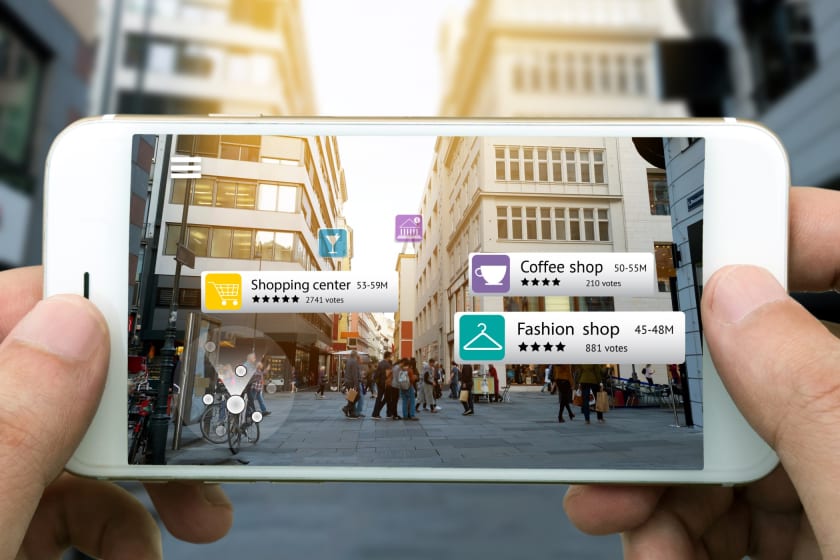Tapping Into The Future of Physical Retail



With the rapid developments in the e-commerce industry, the operations of physical retail stores are being constantly challenged. Why spend so much effort to visit the mall when luxury and famous brands are making their products available online?
Professional retailers share their views that ‘we no longer need an enormous fleet of stores to reach out to customers.’ The post-pandemic situation made things even clearer as you can find brands like Zara and Gap minimizing their physical presence. However, the physical retail store isn’t dead, and it’s simply in the constant state of evolving.
Expert fashion designers say that ‘nowadays stores must be operated under the right set of circumstances for marketing as well as in the right marketplaces.’ The stores appear as spaces where customers can take a look at the products without completing any transaction compulsorily.
“We, as store operators, run ads, and if any shopper walks out without making any purchase, they will at least feel like returning, or to seek similar products for buying them online later,” is a sentiment echoed by many fashion designers. Digital retail stores go hand in hand with the brick-and-mortar business. This navigation or shift will become crucial for the brands or retailers to grow in the upcoming years.
However, supporting the new approach of stores doesn’t necessarily mean avoiding/rejecting the fundamental operations of physical retail. Now, good customer support service, convenience, and ease are more crucial than ever.
Retail Isn’t Dead, But Dead Retail Is

It’s evident that the malls and department stores have certainly been demolished. Several fashion designers consider them as evidence of the end of retail. But these outdated stores have been slowly dying for the past 40 years, and the pandemic was just fuel to the flames.
These outdated retail store approaches worked effectively in an era where consumer demand was more than the supply of the retail stores. In the past few generations, the retail stores and the malls could possibly have built reinforcement anywhere in the US with an assurance of a steady customer flow. Or else, where would they have met their needs, right?
However, in the past few decades, popular retailers like Costco, Walmart, BevMo, Sports Authority, etc., have integrated with shopping center developers to leverage the busiest intersections in the US.
Apart from being over-stored in a pre-pandemic situation, the exceptional depth and breadth of the internet has provided a larger supply of retail options compared to the demand from consumers.
Professionals comment, “a significant part of the collapse of physical retail stores has to be the imbalance in the supply-demand equation, which got accelerated by the pandemic.”
Retailers like Away, Warby Parker, Casper, etc., who drove a focus on making the demand, are now dislodging and tumbling on their hundred-year-old retail instructions.
“What is the reason for doing this, you may ask? Well, they focus on delivering to the consumer’s needs and wants at first, followed by building a customized omnichannel approach to physical retail, which involves both online business and experiential physical retail stores.”
Challenges That Comes With The Online Retail Growth
Several clients ask professional fashion designers/retailers, ‘Why would retailers like Casper, Away even consider having physical retail stores?’
This is because the new retailers often reach an ultimate point online where they find it challenging to reach the customer base. Moreover, the cost involved in acquiring new consumers online becomes too expensive for the inverter’s ROI.
This is one of the significant reasons why the top e-commerce site - Amazon, gives away music, books, and movies, as they want to engage your traffic, loyalty, and commitment for other purchases. This requirement is also why they’re so deeply involved with the grocery stores to purchase retail products and the development of its Go stores.
When compared to the online space, physical stores are phenomenal at appealing to new customers and even non-consumers. Customers hopping in physical stores tends to be more loyal and come back often. Moreover, the acquisition cost involved with physical store customers tends to be much lower for the ROI.
The Public Market
The public market, which you once knew as the ancient Agora, has been present for about a thousand years. It’s our ancestral and hardwiring DNA that drives us to the public market for escaping work and home.
We visit the public market not only to buy grocery items but also to watch and learn about our community. From an anthropological perspective, your behavior becomes uncivil and unsocial when your lives become too focused online.
Although the professionals could agree that the market has switched online due to technological advancements, we aren’t robots. We are species that need to get out to the public realm to experience the world with real-time sensations.
As many people say that the pandemic has devastated physical retail, the quarantine has stocked up the demand of people who are waiting to go out in public and shop.
Physical Retail Will Soon Be Back In Business

The creator of Netscape, Marc Andreessen, says that software eats retail. He, and many consumers, are comparable spirits.
Software engineers are doing their best to take over retail, and they’re giving a good performance. But if consumers start to accept that technology will soon wipe out physical retail, we may soon end up having only houses, parks, and sidewalks with no offices or anything else.
However, the merchants, retailers, and small-business owners may not ever accept such a technologically advanced world. Yes, it’s obvious for the outdated physical retail models to crash down. And they should too, but retail can explore its pathway to the physical realm.
Just like the abandoned shells at the bottom of the sea, the new physical retail stores will rise and overtake the empty spaces with a new approach to attract big clients in place. For instance, if we talk about the fashion retail sphere, platforms and brands like Fashinza have already tapped into the online space, thus helping brand owners and fashion designers source the right kind of materials.
So, to conclude, if we tap into the future of the physical retail store, it is still bright. Technology brings advancement, but it also involves drawbacks. Soon the drawbacks will outweigh the advantages of online stores and bring the physical realm back to its charm. It’s just a matter of time.



















